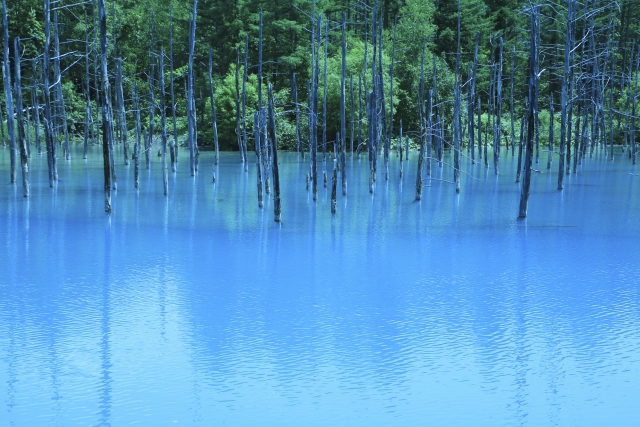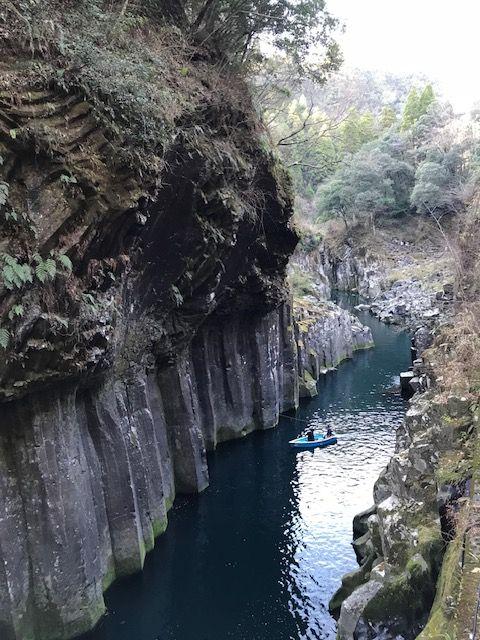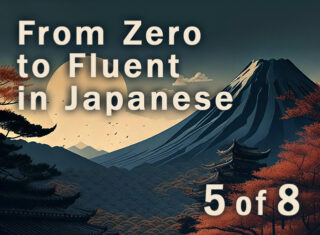- Learning Japanese
- From Zero to Fluent in Japanese
12 Beautiful Places to Visit in Japan – Explore Breathtaking Scenic Spots Across the Country
2025.06.25

Are you dreaming of visiting places in Japan where you can take in stunning scenery? You’re not alone—many people planning a trip to Japan hope to see some of the country’s most beautiful landscapes.
Japan is a country blessed with rich natural beauty—its seas, forests, and mountains are enchanting—and with over 2,700 years of history and tradition, it offers countless breathtaking sights you can’t find anywhere else in the world.
In this article, we’ll introduce 12 must-visit scenic locations across Japan.
From Hokkaido in the north to Okinawa in the south, we’ll explore stunning natural and historical spots throughout the country—use this guide to help plan your trip!
Here are 12 beautiful places in Japan that are absolutely worth a visit:

- Shirogane Blue Pond (Hokkaido)
- Oirase Gorge (Aomori)
- Zao’s Snow Monsters (Yamagata)
- Takeda Castle Ruins (Hyogo)
- Arakurayama Sengen Park (Yamanashi)
- Amaharashi Coast (Toyama)
- Fushimi Inari Taisha (Kyoto)
- Metasequoia Tree Avenue (Shiga)
- Tsunoshima Bridge (Yamaguchi)
- Takachiho Gorge (Miyazaki)
- Yurigahama Sandbar (Kagoshima)
- Manzamo Cliff (Okinawa)
Let’s take a closer look at what makes each of these 12 spots so special.
Shirogane Blue Pond (Hokkaido)
Shirogane Blue Pond, located in Hokkaido, is a stunning natural spot known for its vividly blue water and the larch trees that stand gracefully within it.
The pond's mysteriously vibrant blue color is said to result from a mixture of groundwater containing aluminum blending with river water, which then reflects sunlight in a way that makes it appear brilliantly blue.
The pond takes on different kinds of beauty with each season: in spring, it glows with a calm, soft blue; in summer, it's framed by lush green mountains; in autumn, it's set against fiery red and orange foliage; and in winter, it transforms into a silvery-white wonderland.
Oirase Gorge (Aomori)
Oirase Gorge is a breathtaking stream that flows from Lake Towada, a crater lake formed by volcanic activity approximately 200,000 years ago. Designated as both a Special Place of Scenic Beauty and a Natural Monument by the Japanese government, it is a nationally protected site.
The gorge’s charm lies in its crystal-clear stream weaving through moss-covered rocks and dense forest, the powerful waterfalls scattered along the way, and the vivid green moss that brightens the landscape. It's the perfect place for a leisurely nature walk.
A well-maintained 14 km path runs alongside the stream, complete with both walking trails and a roadway. For those who prefer to explore on wheels, rental bikes are also available—making it easy to enjoy the scenery in a way that suits you best.
Zao’s Snow Monsters (Yamagata)
Zao’s legendary “Snow Monsters” are a rare and otherworldly natural phenomenon, formed by clusters of frost-covered trees—known as juhyō in Japanese. This awe-inspiring sight is something you can only witness in Japan.
These snow-covered shapes form when supercooled mist and clouds freeze instantly upon contact with the Aomori fir trees (Ōshirabiso), gradually growing into massive, surreal figures that resemble creatures made of snow.
At the Zao Onsen Ski Resort, you can visit the “Juhyō Field Course,” where you can admire the snow monsters while skiing, snowboarding, or riding the ropeway or a snowcat vehicle.
The best time to see them is usually from late December to late February, though exact viewing conditions depend on the weather—so it’s best to check ahead before planning your trip.
Takeda Castle Ruins (Hyogo)
Perched atop a 353.7-meter mountain, the Takeda Castle Ruins are the remains of a mountaintop fortress that predates the Warring States period. It is a stunning historic site designated as an Important Cultural Property of Japan.
Although the main keep and buildings no longer remain, the stone walls are beautifully preserved in their original form. On certain mornings, the ruins appear to float in a sea of clouds, earning it the nickname “Castle in the Sky.”
The sea of clouds is most often seen between September and December. The likelihood of witnessing it increases when specific conditions—such as a large temperature difference between day and night, low wind, and high humidity—are met.
★Also try reading:
What Makes Japanese Castles So Fascinating? An Introduction to Highlights for Castle-Hopping and the Differences from Western Castles
Arakurayama Sengen Park (Yamanashi)
Located in Fujiyoshida City, Yamanashi Prefecture, Arakurayama Sengen Park is a globally beloved viewpoint where you can take in Mount Fuji, a five-story pagoda, and cherry blossoms all in one breathtaking scene.
At the top of a 398-step staircase lies an observation deck that offers stunning views throughout the year—not only cherry blossoms in spring, but also fiery foliage in autumn and snow-covered landscapes in winter.
In April, the park hosts the “Arakurayama Sengen Park Cherry Blossom Festival,” complete with food stalls, making it the perfect place for anyone wanting to experience hanami, Japan’s traditional cherry blossom viewing.
Amaharashi Coast (Toyama)
Located in Takaoka City, Toyama Prefecture, Amaharashi Coast is a truly rare scenic spot where you can gaze across the sea and see 3,000-meter-class mountains rising beyond the horizon—a breathtaking sight even on a global scale.
Situated on the Noto Peninsula side, the coast offers an incredible view of the massive Tateyama Mountain Range seemingly floating above the sea, with the iconic “Onna-iwa” (Woman Rock) adding to the mystique.
From spring to early summer, the contrast between the deep blue sea and the snow-capped white peaks is especially stunning. With many clear days, this season is considered the best time to visit.
Right nearby is the “Amaharashi” roadside station, where you can enjoy a meal while gazing out at the sea, or take in the panoramic view from observation decks on the second and third floors.
Fushimi Inari Taisha (Kyoto)

Fushimi Inari Taisha is a world-famous shrine known for its iconic “Senbon Torii”—a mesmerizing path of around 10,000 vermilion torii gates. It is the head shrine of over 30,000 Inari shrines found throughout Japan.
Since the Edo period, worshippers have donated torii gates as a way of offering prayers and gratitude. Over time, the densely lined gates have formed a vibrant, tunnel-like path with an almost mystical atmosphere (students always had a great “WOW!” reaction when I first showed them the torii gate tunnels on class trips) .
The shrine is also home to the “Omokaru Ishi,” a sacred stone linked to wish-making. If you’re visiting Japan, this is a one-of-a-kind place where you can experience a unique and visually stunning part of the country’s spiritual and cultural heritage.
★Also try reading:
14 Historic Landmarks to Visit During Your Trip to Japan
Metasequoia Tree Avenue (Shiga)
Metasequoia Tree Avenue, located in Takashima City, Shiga Prefecture, is a scenic 2.4 km-long road flanked by approximately 500 neatly aligned metasequoia trees. The straight road framed by vivid red foliage in autumn makes it a spectacular destination for a drive.
These tall, symmetrical trees offer different kinds of beauty throughout the seasons: fresh greenery in spring, lush deep green in summer, vibrant autumn colors, and snow-dusted branches in winter.
The fall foliage is typically at its peak from late November to early December. During this season, the "Metasequoia Tree Avenue Autumn Festival" is held, featuring local specialty products and a lively festive atmosphere.
Tsunoshima Bridge (Yamaguchi)
Tsunoshima Bridge is a stunning 1,780-meter-long bridge stretching across white sandy beaches and the crystal-clear cobalt-blue sea of Yamaguchi Prefecture. It’s one of Japan’s most scenic driving routes and a favorite destination for road trips.
The bridge has been featured in Japanese commercials and TV dramas and has gained popularity on social media for its breathtaking views. In summer, visitors also enjoy swimming in the pristine waters below.
From nearby Amagase Park, you can capture incredible photos of the bridge extending from the shore toward the remote island, all set against the dazzling blue sea.
Takachiho Gorge (Miyazaki)

Takachiho Gorge, located in Nishiusuki District of Miyazaki Prefecture, is a dramatic canyon with towering cliffs reaching 80 to 100 meters in height and stretching for about 7 kilometers. It is designated as a National Scenic and Natural Monument of Japan.
The combination of emerald green water and striking rock formations is truly stunning—but beyond its natural beauty, Takachiho is also steeped in mythology, having served as the setting for scenes in Japan’s oldest historical texts.
Renting a rowboat lets you get up close to Manai Falls, one of Japan’s Top 100 Waterfalls, where you can gaze up in awe at the powerful cascade from the water below. When we went there together, we rented a rowboat and gazed up at the gorge walls and waterfalls surrounding us. It honestly felt like stepping into a movie!
Yurigahama Sandbar (Kagoshima)
Yurigahama is a white sandbar that appears only at low tide, located about 1.5 km offshore from Yoron Island. Since it can only be seen on certain days between spring and autumn, it’s often called the “phantom sandbar.”
The shape and location of the sandbar change depending on the day, and it sometimes contains a special type of grain called “star sand.” Legend has it that if you collect as many grains of star sand as your age, happiness will follow.
The crystal-clear sea, sparkling under the sunlight, is perfect for snorkeling—where you can discover vibrant coral reefs, colorful fish, and even sea turtles.
Manzamo Cliff (Okinawa)
Manzamo is a scenic coastal cliff in Okinawa, where lush natural grass spreads across a cape of Ryukyu limestone, offering spectacular views of the brilliant blue sea, dramatic cliffs, and vibrant greenery.
The name “Manzamo” comes from a phrase spoken by the Ryukyuan king in 1726, who praised it as a “field wide enough for 10,000 people to sit.” Today, visitors can stroll along a walking path that provides sweeping views of this picturesque coastline.
Along the 20–30-minute trail, you’ll find unique rock formations—like one shaped like an elephant’s trunk—and views of clear waters where coral reefs can be seen just beneath the surface, making it the perfect spot for a peaceful scenic walk.
Summary: Beautiful Places You Should Visit in Japan

If you're planning a trip to Japan and want to visit some of the country’s most stunning destinations, we hope this list of 12 beautiful locations serves as a helpful guide.
And if you’re thinking, “Since I’m going all the way to Japan, why not learn some Japanese too?”—why not take an online lesson with Oku Sensei’s Japanese?
At Oku Sensei’s Japanese, our experienced teacher, Oku Sensei, offers support to help learners acquire practical Japanese in a short time. It's an ideal option even for those who feel Japanese might be too difficult.
Right now, we're offering a free 30-minute consultation, so don’t miss the chance to check it out!
-
Before article

From Zero to Fluent in Japanese: The True Story of How I Mastered Japanese and Changed My Life - Part 3: Belief, Bonds, and Breakthroughs
-
Next article
From Zero to Fluent in Japanese: The True Story of How I Mastered Japanese and Changed My Life - Part 5: Walking the Fire – Where Words Fail – and Growth Begins

















